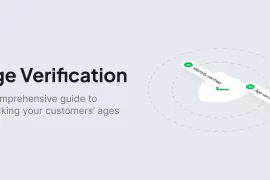The process of online age verifier measures the discrepancy between someone’s stated age and their actual age. There are several ways to demonstrate identification, such as using a national identity card, driver’s license, or passport. Establishing the person based on age using an identity validation solution is the safest and most efficient way to obtain authorization. Companies provide clients with basic age verification to confirm their age before using more trustworthy methods.
The Necessity of Age Verification
In order to safeguard the security and integrity of virtual environments, online age verification system procedures are implemented, especially in various sectors. The ease of access to a wide range of internet platforms in the modern world has led to an upsurge in age identification. The simplicity and validity of identification are facilitated by the ease of signing up for different online services. Fraud and other criminal acts are lessened as a result. Businesses can comply with regulations and avoid fines, penalties, or other financial losses by using age identification solutions. Companies demonstrate their commitment to moral conduct by verifying the age of users and ensuring that access to their goods and services is restricted to those of the appropriate age. It helps protect companies from potential issues and reputational damage. Businesses may prevent minors from viewing age-restricted content by implementing rigorous age-confirmation protocols. The procedure reduces the possibility of errors and system manipulation while protecting it from criminal activity.
Types of Age Verification
For an elderly person to use a service or make a purchase, it is necessary for the product or service they receive to be verified. Whether the age of someone is confirmed individually or digitally can have a significant impact on how it shows up. People must verify the identity of the bearer of officially issued documents, such as passports, licenses, agreements, and national identities.
Certain identification documents require security features like barcode chips explicitly created to aid in creating forged or fake IDs. These can be scanned to assist the seller in identifying the buyer and determining whether or not they are a fraud or fake.
Electronic Verification
When purchasing age-restricted goods and amenities through a mobile app or website, users must show proof of age to use them. Usually, you can do this by presenting an authorized government ID. To ensure their driver’s license is not stolen, the user is asked to snap a selfie with it. The ID identity’s legitimacy is stated. After the image has been scanned and extracted, the information provided is cross-referenced. To provide access control, the age of each individual is verified.
Mitigate Financial Loss with the Age Verification Method
Many organizations use this verify customer age method to reduce influence and fraud. As an age verifier, the application offers financial sectors like banks and insurance companies. This restricts trades in money that are unable or untrustworthy. This minimizes the probability of financial misconduct and terrorism. Businesses employ this technique to thwart fraud and financial loss.
What are the Benefits of Age Verification?
Businesses can gain a lot from identify age online beyond just following the law. By guaranteeing only authorized users can access age restrictions, it improves security. It decreases the likelihood of fraud and identity theft. Increased sales and customer loyalty are associated with greater amounts of customer trust. Businesses with greater levels of compliance use online age verification to lower penalties and reputational harm. The customer’s age and age-group behaviors are verified. The system provides access to goods as well as services. Many verify age techniques are readily available and inexpensive to integrate into existing systems. By taking proactive steps to guarantee compliance and security, companies can boost consumer trust, safeguard their reputations, and promote growth.
Conclusion
Age verification is a necessary process that businesses, acting as regulators, should maintain a careful eye on and consider. A few age checks techniques for verifying an individual’s age are age-restricting, document-based, and biometric-based verification. Biometric verification is the most reliable and secure way to identify unusual behavior or disguise. On the other hand, companies that break the law benefit in many ways, including increased compliance, better security, and customer trust.


